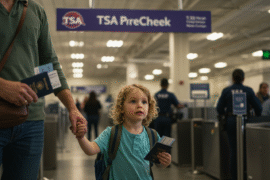This article may contain references to products or services from one or more of our advertisers or partners. We may receive compensation when you click on links to those products or services. Nonetheless, our opinions are our own.

Updated by Albert Fang
Family finance has evolved in recent generations with many modern parents adopting a strategy that rewards responsible choices with the incentive of an allowance in place of mandatory chores and working for the family business with little to no pay. Like many new aspects of modern life, family finance can be executed with more efficiency with the aid of specialized software.
- BusyKid vs Greenlight vs Chase First Checking
- How to use family financial apps to teach kids about personal finances?
- Are family financial apps safe?
- The case for Greenlight
- Pros of Greenlight vs Chase First Checking vs BusyKid
- The case for Busykid vs Greenlight
- Pros of the BusyKid App
- The case for Chase First Banking
- BusyKid vs Greenlight vs Chase First: Which is the best budgeting app?
- Recommended Reads
BusyKid vs Greenlight vs Chase First Checking
Family financial apps help parents manage their households, including assigning chores and tracking allowance. Greenlight was one of the first apps to replace the piggy bank standard with individual debit cards for kids to help parents instill valuable lessons around finances early in life. BusyKid is a competing platform that assists parents with managing chores while providing kids with their own debit cards. Chase First Banking is available to all Chase customers and allows parents to provide their children with a bank account.
How to use family financial apps to teach kids about personal finances?
Teaching kids about finances at a young age can avoid considerable stress for parents and children alike when they set out on their own and face difficult financial decisions. Using a family financial app, parents can reward children for making smart financial decisions while setting limits and monitoring their activity.
Are family financial apps safe?
Greenlight, BusyKid, and Chase First Banking all come with built-in features that allow parents to limit how kids can spend their money.
- Parents can block unsafe spending categories
- With the Greenlight app, parents can even choose the exact stores their children can spend in.
- All apps can provide parents with real-time spending notifications
The case for Greenlight
Greenlight offers parents the opportunity to set chore expectations and monitor their children’s finances with a flat fee of $4.99 for up to five kids. Parents can also teach their children about investments through Greenlight + Invest and Greenlight Max plans which allow kids to invest in stocks and ETFs at an extra cost.
Pros of Greenlight vs Chase First Checking vs BusyKid
- Kids that have jobs and earn paychecks can use Greenlight to direct deposit their earnings onto their cards.
- Greenlight provides store-level spending limits as well as the ability to lock and unlock all spending.
- With Greenlight and BusyKid, kids who meet the minimum age requirements for using Apple Pay and Google Pay may use these services through their phones.
The case for Busykid vs Greenlight
BusyKid is an award-winning, parent-approved app that teaches kids about finances through chores and earning an allowance. The BusyKid Visa Prepaid Spend Card lets children spend the money they earn in stores or online while offering parental controls and monitoring. Comparing BusyKid vs Greenlight – Busykid charges parents a flat fee of just $3.99/mo for up to 5 cards.
Pros of the BusyKid App
- Earn – Kids earn an allowance by completing optional chores and other various incentives assigned by parents
- Save – Parents and kids can set automatic saving habits, allowing any percentage of their weekly allowance to deposit directly into a savings account.
- Donate – Children can be taught to give back by donating any percentage of their funds to a charity of their choice.
The case for Chase First Banking
Chase First Banking is an excellent option for parents that already have a Chase Total Checking or Chase Secure Banking account or are thinking about signing up. Parents can set spending alerts and activity limits from the Chase Mobile app. Kids have access to a bank account and debit card specifically designed with in mind.
BusyKid vs Greenlight vs Chase First: Which is the best budgeting app?
The best budgeting app for kids is Greenlight due to the flexibility of the app and the ability to offer parental controls and monitoring.

Reviewed and edited by Albert Fang.
See a typo or want to suggest an edit/revision to the content? Use the contact us form to provide feedback.
At FangWallet, we value editorial integrity and open collaboration in curating quality content for readers to enjoy. Much appreciated for the assist.
Did you like our article and find it insightful? We encourage sharing the article link with family and friends to benefit as well - better yet, sharing on social media. Thank you for the support! 🍉
Article Title: BusyKid vs Greenlight vs Chase First Comparison: Which Kid’s Budgeting App to Pick?
https://fangwallet.com/2022/02/04/busykid-vs-greenlight-vs-chase-first-comparison-which-kids-budgeting-app-to-pick/The FangWallet Promise
FangWallet is an editorially independent resource - founded on breaking down challenging financial concepts for anyone to understand since 2014. While we adhere to editorial integrity, note that this post may contain references to products from our partners.
The FangWallet promise is always to have your best interest in mind and be transparent and honest about the financial picture.
Become an Insider

Subscribe to get a free daily budget planner printable to help get your money on track!
Make passive money the right way. No spam.
Editorial Disclaimer: The editorial content on this page is not provided by any of the companies mentioned. The opinions expressed here are the author's alone.
The content of this website is for informational purposes only and does not represent investment advice, or an offer or solicitation to buy or sell any security, investment, or product. Investors are encouraged to do their own due diligence, and, if necessary, consult professional advising before making any investment decisions. Investing involves a high degree of risk, and financial losses may occur including the potential loss of principal.
Source Citation References:
+ Inspo
There are no additional citations or references to note for this article at this time.












































